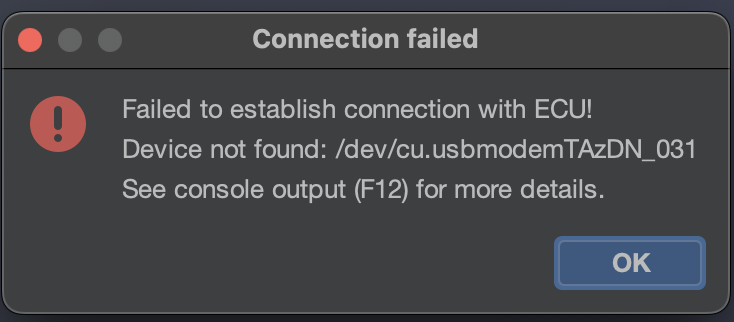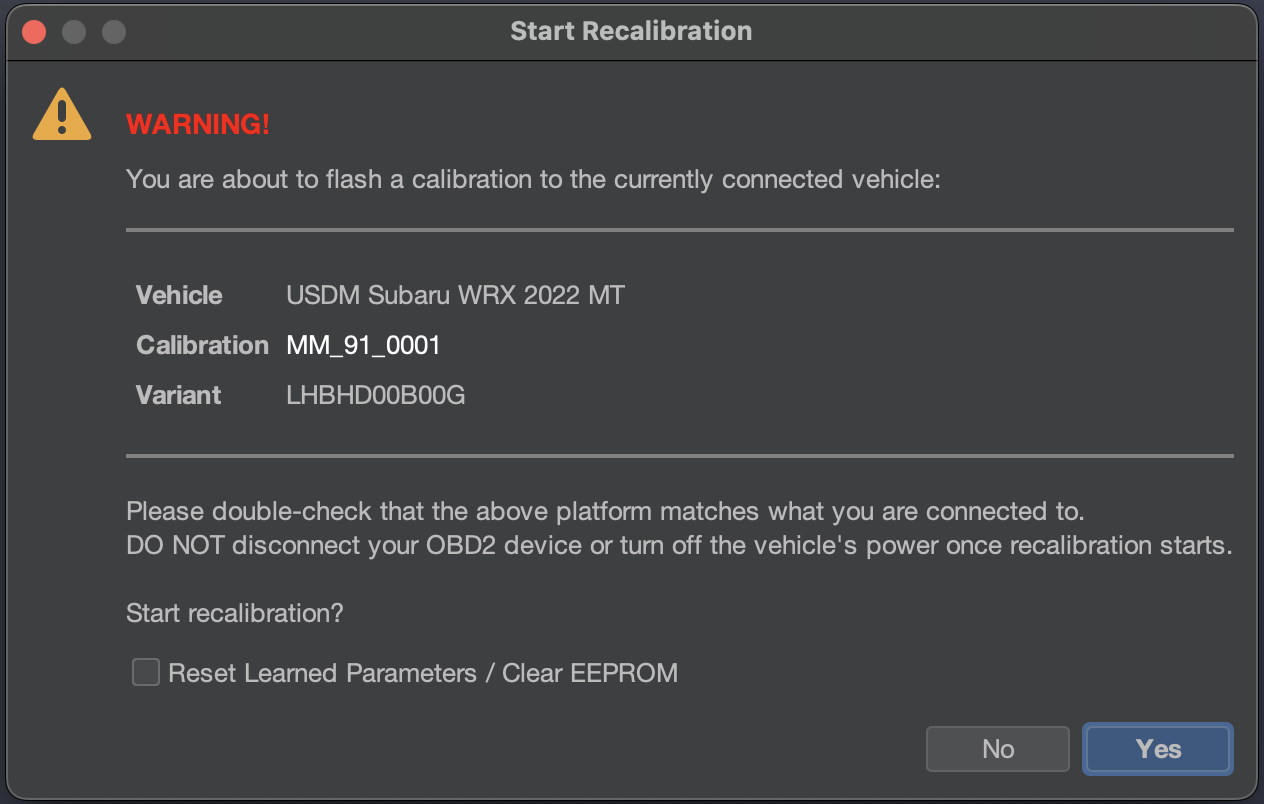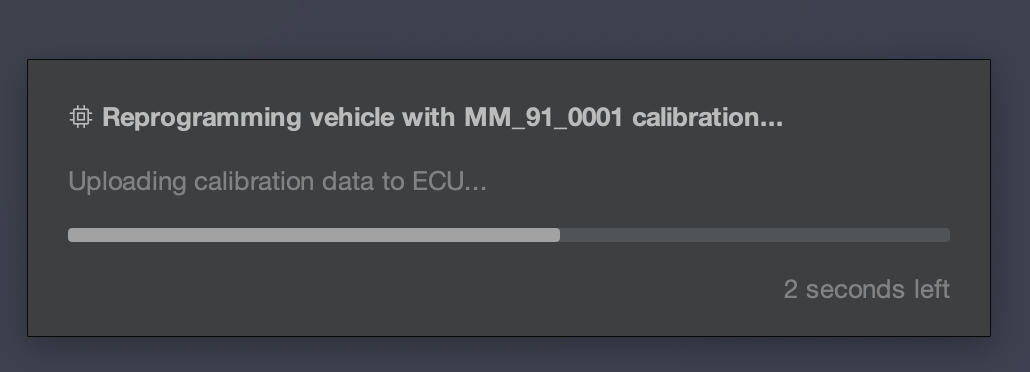Flashing a Calibration
Introduction
For the most reliable and failsafe scenario operating when tuning with Atlas, we recommend purchasing a spare ECU from a site like eBay. Clone your EEPROM to this ECU, and use it for flashing instead of your OEM ECU. Otherwise, if you fail to flash for any reason, you can risk "bricking" your stock ECU. Atlas can recover some ECUs, but there are scenarios where invasive recovery can be necessary.
In order for a calibration (tune) to be recognized completely by a vehicle, you need to transfer and permanently store it in the vehicle's flash memory, or ROM. For this to take place, you need to instruct Atlas to perform the "flashing" process with the vehicle. Flashing is an easy process, but it is possible for it to fail if careful steps are not taken. Please ensure the following is true for your scenario:
- The vehicle has ample battery capacity remaining to supply the electrical system in your vehicle for at least 30 minutes (we recommend turning off headlights/auxiliary electrical components) - don't try to flash a vehicle if it hasn't been started and driven for a long period of time (allowing the alternator time to charge the battery again).
- Your laptop/computer/etc. has ample battery capacity as well to avoid shutdown for at least 30 minutes.
- The vehicle is parked, stationary in a safe location such that anything to go wrong, recovery procedures can be run without interruption.
- Ideally, is connected to a high-amperage battery charger supplying the battery itself with current. Flashing will work without a battery charger connected, but we strongly recommend using one whenever possible to avoid flashing interruptions that can cause your ECU to enter recovery mode.
- The connection you can make with the OBDII port is firm and does not risk being accidentally unplugged with your position in the vehicle (i.e. shifting, moving around) and how it relates to any wires running to the OBDII port.
Vehicle Connection
To reflash, Atlas needs to be connected to the target vehicle. Please see our supported adapter page for full details.
Tactrix OpenPort 2.0 "Connection failed" Error
Sometimes, the OpenPort 2.0 can lose sync with the computer running Atlas. Make sure you always first connect the adapter to your computer running Atlas. Then, connect the OBD2 end of the Tactrix to the vehicle's OBD2 port, often located underneath the trim in the steering wheel area. Doing this in the reverse order can sometimes cause the Tactrix to incorrectly synchronize with your computer and Atlas.
Procedure
Atlas does not support reprogramming ECUs that are actively programmed by other 3rd-party, aftermarket tuning products in order to respect and honor their confidentiality agreements with their customers. Please "unmarry" the ECU from the aftermarket solution first, in order to return it to a factory state, before proceeding.
Make sure the vehicle is in its "Accessory Mode" mode, with the engine not running, but the gauges active. You may see a Check Engine light in this mode.
For key ignition vehicles, turn the key to the "ACC" position to enter this mode.
For push-to-start vehicles, push the ignition button twice with no pedal input (Clutch or Brakes) to enter this mode.
First, make sure you have selected your desired calibration to flash by selecting it in the Active Calibration dropdown menu in the upper-right part of Atlas. Then, click the Flash button,
After a brief period, you will be greeted with this prompt,
- Make sure the Calibration listed is the one you want to flash
- Make sure the Vehicle listed is the one you want to flash
- If you are flashing a new tune, we strongly recommend checking Reset Learned Parameters.
There is no turning back or any chance to interrupt the reprogramming once you click Yes. Make sure you are positive before continuing with reprogramming!
We recommend double-checking your sitting position, reducing any risk to an unplug scenario at this time, and laptop battery charge at this time. When you are ready, click Yes.
The flash data will be reprogrammed to the ECU. Typically, for fast flashes, this can take anywhere from 10 seconds to 5 minutes. Depending on your adapter's capabilities and speed, this may take longer. If necessary, Atlas will automatically enter Recovery Mode to recover the ECU with the selected calibration, and the process may start over.
Once the process completes, you will be greeted with the Reprogramming Complete screen:
Turn off the vehicle's ignition in order to completely shut down the vehicle. Click OK.
Atlas will now be waiting for the vehicle to return to its Access mode it was previously in. Allow the vehicle 10 seconds to fully shut down any internal electrical components that may still be in a flashing state, and return the vehicle to Accessory mode.
Atlas will then clear any non-persistent diagnostic trouble codes (DTC) that were accidentally tripped by any vehicle components during the flashing process, and the flashing process is complete!
Fast Flashing
Atlas supports "fast flashing" a vehicle, but only if the target ECU supports this. If the vehicle supports fast flashing, this will automatically take place.
Fast flashing, in most cases, will apply to any programming event with the vehicle, including first programming (sometimes referred to as "marriage").
Recovery Mode
For more details on following through with a recovery process, see our flash recovery procedures page.
Description
Most vehicles have a manner in which you can recover the ECU should the flashing be incomplete. For the Subaru WRX (2015+), for example, your bootloader (never reprogrammed by Atlas) has logic which runs on start that will attempt to see if the flash had been correctly programmed. It does this by looking at the first and last sections of your programmed ROM to see if certain data it expects to be present are in place. As flash data is sent in a ordered fashion, it is unlikely that both sections will ever be correct if the reprogramming is ever interrupted. If these sections are not correct, your ECU will enter recovery mode. In recovery mode, your ECU cannot operate the vehicle, but instead is waiting for a new ROM to be uploaded.
If, for example, power is lost to the ECU while flashing (low battery/etc.), this is the mode you will more than likely end up in. If Atlas fully supports your vehicle and your ECU also has a recovery mode that Atlas can interact with, Atlas will handle interacting with your ECU in this recovery mode.
Bricked ECUs
Please reach out to NAMR if your ECU is "bricked", or in other words it cannot communicate when recovery mode is expected. We offer a service to attempt recovery on capable ECUs in this more challenging state with specialized tooling at merely the cost of shipping as a courtesy to support our community.






